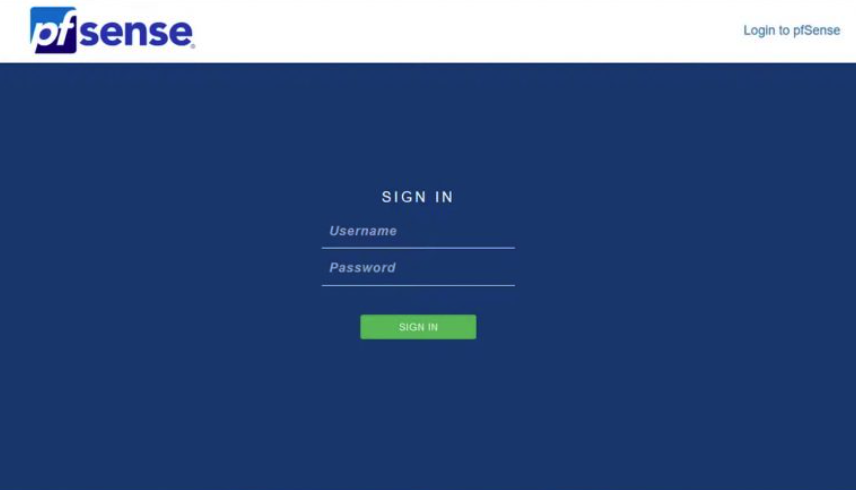pfSense routers offer powerful features, perfect for users who need advanced security and control over their network. Accessing the pfSense router’s admin panel allows you to tweak your settings, monitor network traffic, and ensure a seamless connection for all your devices. Ready to unlock the full potential of your pfSense router? Let’s get started!
How to Log In to Your pfSense Router
Logging in to your pfSense router’s admin panel is straightforward if you follow these steps:
Step 1: Connect to Your Network
Make sure your device is connected to the pfSense router through Wi-Fi or Ethernet:
- Wi-Fi Connection: Use the SSID (Wi-Fi name) and password found on your router’s label.
- Ethernet Connection: For optimal speed and stability, use an Ethernet cable to directly connect your device to the router.
Step 2: Open a Web Browser
Launch your preferred browser (Google Chrome, Firefox, Safari, etc.) on your device.
Step 3: Enter the Router’s IP Address
In the browser’s address bar, type http://192.168.1.1 or http://192.168.0.1 and press Enter. You’ll be taken to the pfSense login page.
Pro Tip: If these IP addresses don’t work, check the router’s manual or the back of the device for the correct address.
Step 4: Input Your Login Credentials
Enter the default login details when prompted:
- Username: admin
- Password: pfsense (or as specified on the router’s label).

If you’ve customized your login credentials but forgot them, you can reset the router to restore the defaults.
Customizing pfSense Router Settings
Once logged in, there are plenty of settings you can tweak to fit your network’s needs. Here are some common configurations to consider:
1. Change Wi-Fi Name and Password
- Go to the Wireless Settings section.
- Update the SSID (Wi-Fi name) and password to something secure and easy to remember.
- Save the changes to enhance network security.
2. Enable Parental Controls
Keep track of your kids’ internet usage with parental controls:
- Navigate to the Parental Controls menu.
- Set access schedules and block websites or specific content.
- Save the settings to apply the changes.
3. Update Router Firmware
Ensure your router is running smoothly by keeping its firmware updated:
- Go to the System > Firmware section.
- Check for new updates and follow the on-screen instructions to install them.
4. Set Up a VPN
Add an extra layer of security by setting up a VPN:
- Go to the VPN section of your router’s settings.
- Enable the VPN feature and configure your VPN settings.
- Save the changes to secure your network.
5. Monitor Network Traffic
Keep an eye on the devices connected to your network:
- Head over to the Traffic Graph or Network Monitoring section.
- View the amount of bandwidth each device is using and disconnect any unauthorized devices to optimize your connection.
Troubleshooting pfSense Router Login Issues
Can’t Access the Login Page?
- Double-check the IP address: http://192.168.1.1 or http://192.168.0.1.
- Ensure that your device is connected to the router.
- Restart your router and try again.
Forgot Your Login Credentials?
- Reset the router by pressing and holding the reset button for 10-15 seconds.
- After resetting, you can log in using the default credentials.
Slow Internet Speeds?
- Check for firmware updates.
- Relocate your router to a more central area to avoid interference.
- Disconnect unused devices to free up bandwidth.
Why Log In to Your pfSense Router?
By logging into your pfSense router, you’ll be able to:
- Enhance Security: Prevent unauthorized access by changing the default login credentials.
- Optimize Performance: Adjust settings to improve internet speed and reduce latency.
- Take Control of Your Network: Monitor bandwidth usage, set up a VPN, and even manage parental controls.
FAQs About pfSense Router Login
- What is the default IP address for pfSense routers?
The default IP addresses are typically http://192.168.1.1 or http://192.168.0.1. - How do I reset my pfSense router?
Press and hold the reset button for 10-15 seconds to restore factory settings. - Can I access pfSense login from my phone?
Yes, you can access it on your phone as long as it’s connected to the router’s Wi-Fi. - Why isn’t my pfSense login page loading?
Verify the correct IP address, clear your browser’s cache, and ensure your device is connected to the network.